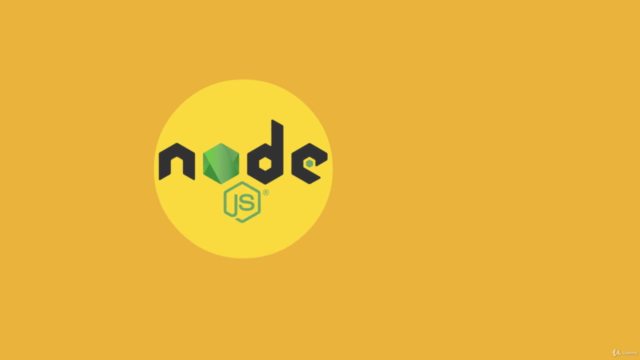Microservices with Node JS and React

Why take this course?
🌟 Master Microservices with Node, React, Docker & Kubernetes 🌟
Course Headline:
Build, deploy, and scale an E-Commerce app using Microservices built with Node, React, Docker & Kubernetes 🚀
Overview:
Microservices architecture is the cornerstone of modern applications designed to grow and adapt. However, the journey into mastering microservices can be fraught with complexity and challenges. This course is meticulously crafted to navigate you through every major issue around building microservices, using Node JS and React, with a focus on real-world problems like data replication and unordered event streams.
Why Choose This Course? 🤔
Event-Based Architecture? Covered! Server side rendering with React? Yep. Scalable, production-ready code? Its here!
This course is your comprehensive guide to understanding the intricacies of full-stack development through the lens of microservices. You will not only build a React app using Hooks but also dive deep into backend functionalities including database design and deployment strategies.
Learning Objectives:
How This Course Works This course is designed to get you hands-on with the core concepts of microservices, avoiding pre-packaged frameworks that mask the complexities. We'll write custom code using a minimal set of libraries to expose you to the real challenges of working with asynchronous events and more.
Technologies Used:
What Technology You'll Use Our full-stack application will be built using:
- React and Next JS for the frontend,
- Node and Express for the backend,
- Mongo or Redis for data storage,
- Docker for containerization,
- Kubernetes for orchestration,
- Typescript as the primary language for code clarity and robustness.
No prior knowledge of these technologies is required! The course is structured to take you from beginner to expert, assuming only basic Javascript and Express knowledge.
Skills Gained:
What You'll Be Able to Do Upon completing this course, you will be able to:
- Architect a multi-service application,
- Determine if a microservices approach is suitable for your app,
- Solve complex problems with asynchronous communication,
- Scale services using Kubernetes Deployments,
- Enforce structure constraints on cross-service events,
- Implement JWT-based authentication for your APIs, and much more!
Course Topics:
What You'll Learn This course covers a plethora of topics including:
- Patterns to create scalable microservices,
- Building a Server-Side-Rendered React app using Next JS and Hooks,
- Implementing a custom event bus,
- Running development environments through cloud providers,
- Ensuring consistently structured responses from APIs,
- Best practices in service communication,
- Documenting and enforcing structure constraints on events,
- Securing API access with JWT authentication, and more!
This course is designed to be the comprehensive learning experience I wish I had when embarking on my microservices journey. It focuses on the most challenging aspects, provides clear explanations, and discusses various design options to ensure you're well-equipped to master microservices with Node, React, Docker, and Kubernetes.
Don't miss out on this opportunity to elevate your skills and dive deep into the world of microservices. Enroll in the course today and take your application development to the next level! 🚀💻
Course Gallery




Loading charts...
Comidoc Review
Our Verdict
This Udemy course is undoubtedly one of the most resourceful options for learning microservices built with Node JS and React, despite a few minor inconveniences. Standout features include the in-depth demonstration on setting up local Kubernetes cluster with Skaffold, adaptable microservices devops content, and thoughtful structuring that covers complex inter-service communication concepts comprehensively. Although certain sections might be considered slightly outdated – such as a few mentions of NATS – the course offers valuable long-term insights on microservices design that exceed the mere construction of a project for portfolio purposes. In comparison to its title, however, this course allocates more focus towards backend services rather than React. Despite its extensive content spanning over 54.5 hours, learners might still find some gaps in their understanding with certain topics related to front-end development.
What We Liked
- In-depth coverage of setting up local Kubernetes cluster with Skaffold for faster and more production-like development
- Comprehensive microservices devops content that can be adapted to various languages, not just Node.js and Typescript
- Thoughtful and high-quality course structure allowing students to grasp complex concepts like inter-service communication
- Production-ready approach encourages best practices such as writing comprehensive tests and sharing reusable code with custom NPM packages
Potential Drawbacks
- Some sections may be considered outdated, but the course still provides valuable long-term concepts and teachings worth more than simply building a course app for one's portfolio
- The React portion of the course comes up short with more focus on backend microservices development as compared to the title suggesting something different
- Some students might consider it too exhaustive due to its depth, causing the need to take breaks during the 54.5 hours of total content